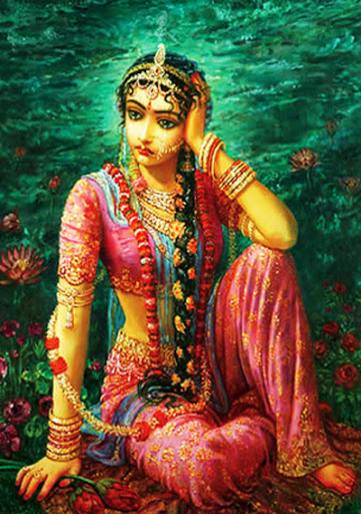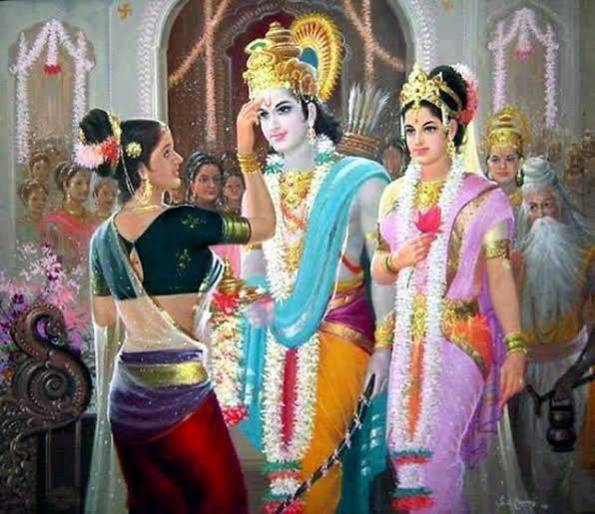Child Marriages did not exist in Ancient India and started only after Islamic Invasions happened.
Vedas, Itihasas or Puranas do not mention any child marriage. All women in ancient times married after atleast attaining 16 years of age and most marriages were Swayamvar.

Many pseudo scholars wrongly claim that Rama and Seeta were kids when married, but Valmiki Ramayana proves them wrong.
In Aranya Kanda of Valmiki Ramayana, Seetha tells Ravana that she had stayed at Ayodhya for 12 years after marriage. When She had left for Vanvaas, she was 18 and Rama was 25 years of age.
Does it mean she was 6 and Rama was 13 at time of marriage ?
Since vedic era, Upanayana or initiation of education was considered as 2nd birth (Dwija). For Brahmins it was done at age of 8, Kshatriyas at 11 and Vaishyas at 12. They were called Dwija (twice born) after that (Apasthamba Grihya Sutra).
Since both Seetha and Rama were from Kshatriya families, both of them were initiated at age of 11.
So, after their 2nd birth (initiation), their new age was 6 and 13, but their biological age was 17 and 24 years respectively at time of marriage.
After 12 years of married life at Ayodhya, when they left for Forest exile, their new ages were 18 and 25 but biological ages were 29 and 36 years.

उषित्वा द्वादश समा इक्ष्वाकुणां निवेशने।
भुञ्जाना मानुषान्भोगान्सर्वकामसमृद्धिनी।।3.47.4।।
Translation : I lived in the house of the Ikshvakus for twelve years and enjoyed all kinds of pleasures meant for mortals.
ततस्त्रयोदशे वर्षे राजामन्त्रयत प्रभुः।
अभिषेचयितुं रामं समेतो राजमन्त्रिभिः।।3.47.5।।
Translation : In the thirteenth year of marriage, King Dasaratha consulted other ministers to consecrate Rama.
मम भर्तामहातेजा वयसा पञ्चविंशकः।
अष्टादश हि वर्षाणि मम जन्मनि गण्यते।।3.47.10।।
Translation : My husband who was very bold was 25 years and I had completed 18 years.
When Ravana abducted Sita after 13 years in forest, her actual age was 42 and Rama was 49.
When Rama killed Ravana and returned with Sita back to Ayodhya, their ages were 50 and 43 respectively.

When Viswamitra wants Dasaratha to send his son Rama for killing rakshasas, Dasaratha says that Rama was only 19 years old at that time. (Bala Kanda)
ऊनषोडशवर्षो मे रामो राजीवलोचन:।
न युद्धयोग्यतामस्य पश्यामि सह राक्षसै:।। 1.20.2
Translation : My lotus-eyed son Rama is around sixteen years. I do not think he has ability to fight with the rakshasas in a battle.
Here, ऊनविंशति (Una-Vimsati) means 19, which is less than 20 by 1.
So Rama was 19 years old when he went to train under Viswamitra and after few years of training, Killed Tadaka etc.
At the age of 24, he was taken to Swayamvar and married Seetha, who was 17 years at that time.

Susrutha, the ancient surgeon of India, wrote in his book ‘Susruta Samhita’ that marriage age of girl must be above 16 and for boy it must be above 25 years.
“Pancha VimsE tatO varshE, pumaannaari tu ShoDasE,
samtvAgata vOyyau tau jaaniyaat kusalO bhishak”

Seetha described as Adult before marriage in Padma Purana
Padma Purana describes Seetha before marriage as a fully grown adult woman.

At that time only Sītā came there. She had the splendour of lotus-filaments.
She had put on a reddish garment. Her forehead was graced with hair which was dark and curly, which was unsteady, which attracted the minds of young men, which spilt up the sight of the seer, thereby as it were showing that ladies’ hearts are like this only. Her eyebrows were like Cupid’s bow. Her eyes were reddish like lotus-petals.
Her nose was like the sesamum.
Her reddish lips were close to her glossy, hairy cheeks, and resembled rubies. Her teeth were like (the seeds of) a pomegranate. Her lips were reddish like the japā flowers. Her chin was very beautiful.
Her ears were like oyster-shells. Her neck was even and long. Her breasts were fleshy. The bud-like breasts were round and raised. She looked beautiful with many necklaces. Her figure was beautiful.
Her creeper-like arms were not very fleshy. She was innocent. The tips of her fingers were moderate, even and were dyed with the alaktaka dye. She had put on various jewelled rings.
She was holding a white lily. She came in front of Mārīca who was eating.
There are many instances in Ramayana to prove that Rama and Seetha were adults when married.
They spent 12 years together in Ayodhya and later 13 years together in forest before Ravana kidnapped her.
Their 25 years relationship was broken by Ravana.

In Ramcharitmanas, Rama described Seetha’s beauty to Lakshmana before their Swayamvar :
“Again, the moon waxes and wanes; she is the curse of lovesick damsels and is devoured by Råhu when she crosses the latterís orbit. She causes anguish to the Cakravåka (the ruddy goose) and withers the lotus. O moon, there are numerous faults in you. One would incur the blame of having done a highly improper act by comparing you with the countenance of Videha’s daughter.””
Thus finding in the moon a pretext for extolling the beauty of Seetha’s countenance and perceiving that the night had far advanced, Rama returned to His Guru; and bowing at the sage’s lotus feet and receiving his permission He retired to rest.
At the close of night the Lord of Raghus woke; and looking towards His brother He began to speak thus, “Brother, the day has dawned to the delight of the lotus, the Cakravåka and the whole world.”
Joining both of his palms Lakshmana gently spoke the following words indicative of the Lord’s glory:
“The moon is one of the fourteen jewels (treasures of the world) that were churned out of the ocean by the joint efforts of the gods and demons at the dawn of creation.”.
It is to this Pauranika legend that the Lord refers to above. The very first product of this churning was poison, which was swallowed by Lord Siva. It is in this sense that the moon is spoken of as having poison for a brother.
“The day having dawned, the lily has faded and the brightness of the stars is dimmed, just as at the news of your arrival all the princes (assembled here) have grown faint.”
Also, Seetha had gone to worship Parvati, when She had met Rama in the garden for the first time. Her friends were there (who were of course of Her age) and they were teasing Seetha and Rama because they were awestruck by each others’ beauty.
Unless they were adults, these descriptions and emotions do not match.

Until 1000 years ago, there were no child marriages, no forced arranged marriages for Indian women. Most had choice of Swyamvar or agreed to choice of parents.
Only after Islamic invasions, when unmarried young women were kidnapped and raped, people decided to perform child marriages to ensure their safety to some extent.
